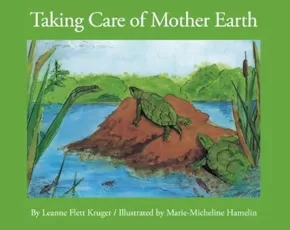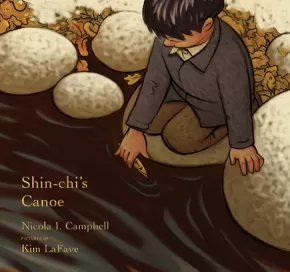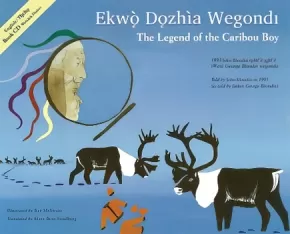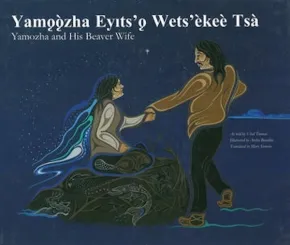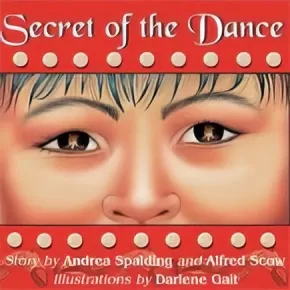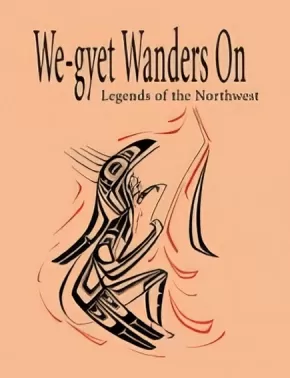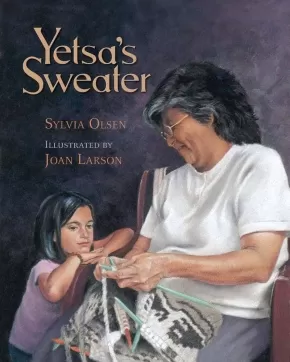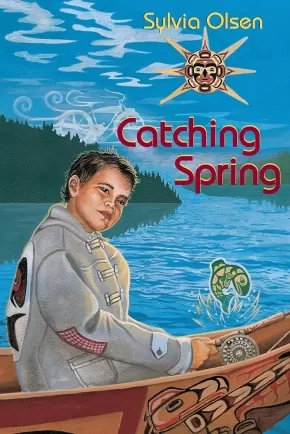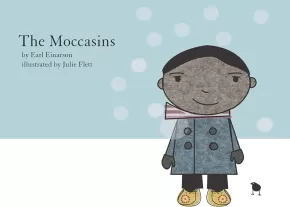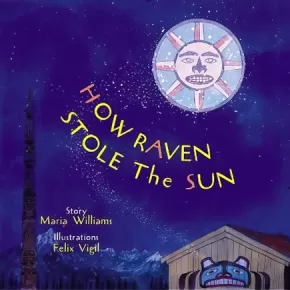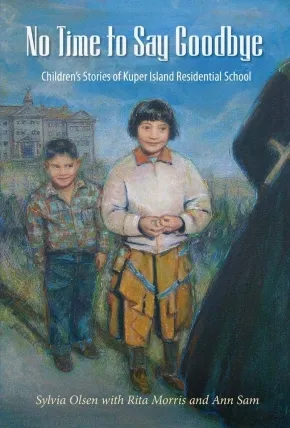
BC - Authentic First Peoples Resources K-7 2012
31
-
45
of
50 Results;
Sort By
Go To
of 4
This resource guide has been developed by the First Nations Education Steering Committee (FNESC) with assistance from the BCMOE and support from the Education Partnerships Program of AANDC. Date first published: March 2012.
Taking Care Of Mother Earth
$12.95
Format:
Paperback
ISBN / Barcode: 9781894778558
Synopsis:
Synopsis:
B.C. Science Supplementary Resource: K-Physical and Earth Science
Charlie and Grandma are doing chores around the house. While doing the chores, grandma shares loving stories with Charlie on how to take care mother earth.
This series was developed through consultations with health promotion workers and early childhood educators. There are six titles in the series that deal with issues such as healthy eating, safety, dealing with feelings and notions of respect. This series is appropriate for ages three to five, and the books have full-colour illustrations.
Dancing in My Bones
$17.50
Artists:
Format:
Paperback
Text Content Territories:
Indigenous Canadian; Métis;
ISBN / Barcode: 9780920915899
Synopsis:
Synopsis:
Dancing in My Bones, the sequel to the highly successful book Fiddle Dancer, returns us to the story of a young Métis boy named Nolin as he continues to discover his Métis heritage. Lovingly written by Wilfred Burton and Anne Patton and vividly illustrated by Sherry Farrell Racette, Dancing in My Bones will take you on a journey to discover Moushoom's first moose hunt, red lipstick kisses, Uncle Bunny's fiddling, and the return of the "Bannock Jig." But most importantly, by the end of the story, you might feel like you have dancing in your bones!
Includes a CD with English and Michif Narrations of the Story and Fiddle Music!
Educator & Series Information
The trilogy is composed of these three titles: Fiddle Dancer, Dancing In My Bones, and Call of the Fiddle. Dancing in My Bones is the second book in the trilogy.
Michif translations by Normal Fleury.
Additional Information
50 Pages | 27.9 cm H x 21.5 cm W
Jenneli's Dance (8 in Stock)
$12.95
Artists:
Format:
Paperback
Text Content Territories:
Indigenous Canadian; Métis;
ISBN / Barcode: 9781894778619
Synopsis:
Synopsis:
Jenneli is a shy young girl who feels that she is nothing special, until she learns about the Métis Red-River Jig from her grandma. One day, Grandma Lucee enters her into a jigging contest. Jenneli's Dance is a story that instills a sense of pride in the Métis culture, and deals with low self-esteem.
Additional Information
44 pages | 7.94" x 9.02"
niwechihaw / I Help
$12.99
Artists:
Format:
Paperback
Text Content Territories:
Indigenous Canadian; First Nations; Cree (Nehiyawak);
ISBN / Barcode: 9781773061160
Synopsis:
Synopsis:
This sweet, simple story looks at a very special relationship. A young boy goes for a walk with his kohkom, or grandmother, listening, picking, praying, eating... just as she does. In doing so, he begins to learn the rich cultural traditions and values of his Cree heritage.
Caitlin Dale Nicholson’s acrylic-on-canvas illustrations portray the close relationship between the boy and his grandmother and the natural beauty of the bush. Her text has been translated into Cree by Leona Morin-Neilson, who was also the inspiration for the story and collaborated with her on this work.
Educator & Series Information
Recommended Ages: 4-7
Delivered in a dual-language format of Cree (y-dialect) and English.
This book is part of the Nôhkom series.
Recommended for Grades K-1 for the following subject areas: English Language Arts, Indigenous Language Studies, Social Studies, Science and Nature, Visual Arts.
Authenticity Note: Leona Morin-Neilson (Métis-Cree) is a Cree teacher and the inspiration behind this book. She collaborated with the author to create this work. Leona Morin-Neilson teaches Cree at the “Power of Friendship” Aboriginial Headstart program in Prince George, British Columbia, and at the University of Northern British Columbia. She also teaches people in her community about traditional plants and how they can be used for medicinal purposes.
Because of the collaboration between Leona and the author, and Leona's Cree translation, this book has been labeled as containing Authentic Indigenous Text. It is up to readers to determine if this work is authentic for their purposes.
Additional Information
24 pages | 8.50" x 12.25"
Shin-chi's Canoe
$18.95
Artists:
Format:
Hardcover
Text Content Territories:
Indigenous Canadian;
ISBN / Barcode: 9780888998576
Synopsis:
Synopsis:
This moving sequel to the award-winning Shi-shi-etko tells the story of two children's experience at residential school. Shi-shi-etko is about to return for her second year, but this time her six-year-old brother, Shin-chi, is going, too. As they begin their journey in the back of a cattle truck, Shi-shi-etko takes it upon herself to tell her little brother all the things he must remember: the trees, the mountains, the rivers and the tug of the salmon when he and his dad pull in the fishing nets. Shin-chi knows he won't see his family again until the sockeye salmon return in the summertime.
When they arrive at school, Shi-shi-etko gives him a tiny cedar canoe, a gift from their father. The children's time is filled with going to mass, school for half the day, and work the other half. The girls cook, clean and sew, while the boys work in the fields, in the woodshop and at the forge. Shin-chi is forever hungry and lonely, but, finally, the salmon swim up the river and the children return home for a joyful family reunion.
Awards
- 2009 TD Canadian Children’s Literature Award
- 2008 Governor General’s Literary Award for illustration
Reviews
"Shin-Chi’s Canoe is a story about a brother and sister sent to a residential school and the separation from their culture they experience. Shin-Chi finds comfort with a little cedar canoe and the dream of returning home like the salmon. The children both find peace and strength by connecting to Mother Earth and the water. The story acknowledges the residential school system's devastating events while highlighting Indigenous children's strength and resiliency." - The Dalai Lama Center
Educator Information
Recommended Grades: 2-10.
Recommended Authentic First Peoples K-9 resource.
This illustrated children's story is recommended for English First Peoples Grades 10 for units pertaining to childhood through Indigenous writers' eyes and the exploration of residential schools and reconciliation through children's literature.
This book is available in French: La pirogue de Shin-chi
Additional Information
40 pages | 8.50" x 8.13"
Fiddle Dancer
$17.50
Artists:
Format:
Paperback
Text Content Territories:
Indigenous Canadian; Métis;
ISBN / Barcode: 9780920915769
Synopsis:
Synopsis:
Fiddle Dancer tells the tale of a young Métis boy, Nolin, and his growing awareness of his Métis heritage and identity while his "Moushoom," or grandfather, teaches him to dance. Authors Wilfred Burton and Anne Patton masterfully weave a childhood story rich in Métis culture and language. This delightful story captures the importance of Elders as role models, a child's apprehension at learning new things, and the special bond between grandparents and grandchildren. Sherry Farrell Racette provides many beautiful illustrations for the book.
Includes a CD with English and Michif Narrations of the Story and Fiddle Music!
Educator & Series Information
This is the first book in a trilogy composed of these three titles: Fiddle Dancer, Dancing In My Bones, and Call of the Fiddle.
Michif translations by Normal Fleury.
Additional Information
53 Pages | 27.9 cm H x 21.7 cm W
The Legend of the Caribou Boy / Ekwò Dǫzhìa Wegondl
$19.95
Artists:
Format:
Paperback
Text Content Territories:
Indigenous Canadian; First Nations; Dene; Tlicho (Dogrib);
ISBN / Barcode: 9781894778718
Synopsis:
Synopsis:
Maintaining the Dene storytelling tradition of passing along the teachings to their children, John Blondin relayed the story of The Legend of the Caribou Boy as he heard it from his father, George Blondin a respected Elder and storyteller. Now written down in dual language the legend is passed on to you. Discover one small part of Dene history and the lessons that have been passed on for generations.
A young boy is having trouble sleeping at night. he is being called to fulfill his destiny, a destiny which lives on today in the traditions and culture of the Dene people and their relationship to the caribou and the land on which they live.
The multimedia CD included allows readers to hear and see the Dogrib legend in Dogrib and English on a Mac or PC computer or insert it into a CD player to listen to the story in either language.
Educator Information
Recommended for ages 6 to 8.
Additional Information
40 pages | 10.00" x 8.00"
Yamozha and His Beaver Wife (1 in stock, in reprint)
$25.95
Artists:
Format:
Hardcover
Text Content Territories:
Indigenous Canadian; First Nations; Dene; Tlicho (Dogrib);
ISBN / Barcode: 9781894778572
Synopsis:
Synopsis:
Yamozha and His Beaver Wife is a story based upon an oral legend of the Dene people. Yamozha stories entertain but also teach and pass on knowledge. In this story, Yamozha forgets his promise to his wife and as a result she turns into a giant beaver. He chases her all over Denedeh but is unable to catch her. This story tells of how this great medicine man shaped the land in the Dogrib region and surrounding areas into what it is today.
Additional Information
48 pages | 12.30" x 10.02"
Secret of the Dance
$12.95
Artists:
Format:
Paperback
Text Content Territories:
Indigenous Canadian; First Nations; Kwakwaka'wakw (Kwakiutl); Kwicksutaineuk ;
ISBN / Barcode: 9781554691296
Synopsis:
Synopsis:
"Many years ago, when the world and I were younger, my family defied the government."
A boy will never forget witnessing a forbidden Potlatch. In 1935, a nine-year-old boy's family held a forbidden Potlatch in faraway Kingcome Inlet. Watl'kina slipped from his bed to bear witness. In the Big House masked figures danced by firelight to the beat of the drum. And there, he saw a figure he knew. Aboriginal elder Alfred Scow and award-winning author Andrea Spalding collaborate to tell the story, to tell the secret of the dance.
Educator Information
"This story tells of a time when potlatches, ceremonial dancing and the wearing of regalia and masks were forbidden by Canadian law. A young boy, based on Judge Alfred Scow's boyhood story, witnesses the last secret potlatch of this community before the threat of imprisonment caused them to stop dancing." - FNESC, "BC First Nations Land, Title, and Governance"
Additional Information
32 pages | 9.00" x 9.00"
We-gyet Wanders On
$14.95
Format:
Paperback
Text Content Territories:
Indigenous Canadian; First Nations; Gitxsan (Gitksan);
ISBN / Barcode: 9780888396365
Synopsis:
Synopsis:
The legends collected here are the ancient stories of the people of "Ksan who have lived in northern British Columbia for over six thousand years. We-Gyet is the essence of every man's frailties exaggerated into gentle humour or ribald laughter. His adventures always end in disaster. His blunders and tricks changed the face of the earth, and many of earth's creatures. We-Gyet was a creator - by accident!
Authenticity Note: The contributions of Indigenous peoples to this work is why it contains the Authentic Indigenous Text and Artwork labels.
Yetsa's Sweater
$12.95
Artists:
Format:
Paperback
Text Content Territories:
Indigenous Canadian; First Nations; Salish; Coast Salish; Cowichan;
ISBN / Barcode: 9781550392029
Synopsis:
Synopsis:
On a fresh spring day, young Yetsa, her mother and her grand-mother gather to prepare the sheep fleeces piled in Grandma's yard. As they clean, wash and dry the fleece, laughter and hard work connect the three generations. The reader joins this family in an old, but vibrant tradition: the creation of a Cowichan sweater.
Additional Information
|
Catching Spring
$7.95
Format:
Paperback
Text Content Territories:
Indigenous Canadian; First Nations; Salish; Coast Salish; Saanich (WSANEC); Tsartlip;
ISBN / Barcode: 9781551432984
Synopsis:
Synopsis:
The year is 1957, and Bobby lives on the Tsartlip First Nation reserve on Vancouver Island where his family has lived for generations and generations. He loves his weekend job at the nearby marina. He loves to play marbles with his friends. And he loves being able to give half his weekly earnings to his mother to eke out the grocery money, but he longs to enter the up-coming fishing derby. With the help of his uncle and Dan from the marina his wish just might come true.
Educator Information
Themes: contest, family, fishing, Indigenous.
Educator & Series Information
This book is part of the Orca Young Readers series, which are award-winning, bestselling chapter books for ages 8–11. Titles in this series include historical and contemporary stories with age-appropriate plots.
Additional Information
128 pages | 5.00" x 7.50"
The Moccasins
$12.95
Artists:
Format:
Paperback
Text Content Territories:
Indigenous Canadian;
ISBN / Barcode: 9781894778145
Synopsis:
Synopsis:
This is an endearing story of a young Aboriginal foster child who is given a special gift by his foster mother. Her gift of warmth and thoughtfulness helps her young foster children by encouraging self-esteem, acceptance and love. Written as a simple story, it speaks of a positive foster experience.
Additional Information
16 pages | 8.00" x 6.00" | Paperback
How Raven Stole the Sun (Tales of the People)
$21.95
Artists:
Format:
Hardcover
Text Content Territories:
Indigenous American; Alaska Native; Tlingit;
ISBN / Barcode: 9780789201638
Synopsis:
Synopsis:
A long time ago, Raven was pure white, like fresh snow in winter. This was so long ago that the only light came from campfires, because a greedy chief kept the stars, moon, and sun locked up in elaborately carved boxes. Determined to free them, the shape-shifting Raven resourcefully transformed himself into the chief's baby grandson and cleverly tricked him into opening the boxes and releasing the starlight and moonlight. Though tired of being stuck in human form, Raven maintained his disguise until he got the chief to open the box with the sun and flood the world with daylight, at which point he gleefully transformed himself back into a raven. When the furious chief locked him in the house, Raven was forced to escape through the small smokehole at the top--and that's why ravens are now black as smoke instead of white as snow.
This engaging Tlingit story is brought to life in painted illustrations that convey a sense of the traditional life of the Northwest Coast peoples.
Additional Information
32 pages | 9.50" x 9.60"
No Time to Say Goodbye
$12.95
Format:
Paperback
Text Content Territories:
Indigenous Canadian; First Nations; Salish; Coast Salish; Saanich (WSANEC); Tsartlip;
ISBN / Barcode: 9781550391213
Synopsis:
Synopsis:
No Time to Say Goodbye is a fictional account of five children sent to aboriginal boarding school, based on the recollections of a number of Tsartlip First Nations people. These unforgettable children are taken by government agents from Tsartlip Day School to live at Kuper Island Residential School. The five are isolated on the small island and life becomes regimented by the strict school routine. They experience the pain of homesickness and confusion while trying to adjust to a world completely different from their own. Their lives are no longer organized by fishing, hunting and family, but by bells, line-ups and chores. In spite of the harsh realities of the residential school, the children find adventure in escape, challenge in competition, and camaraderie with their fellow students.
Educator Information
Recommended for ages 12+ by the publisher.
Additional Information
175 pages | 5.25" x 7.75" | Paperback
Sort By
Go To
of 4

